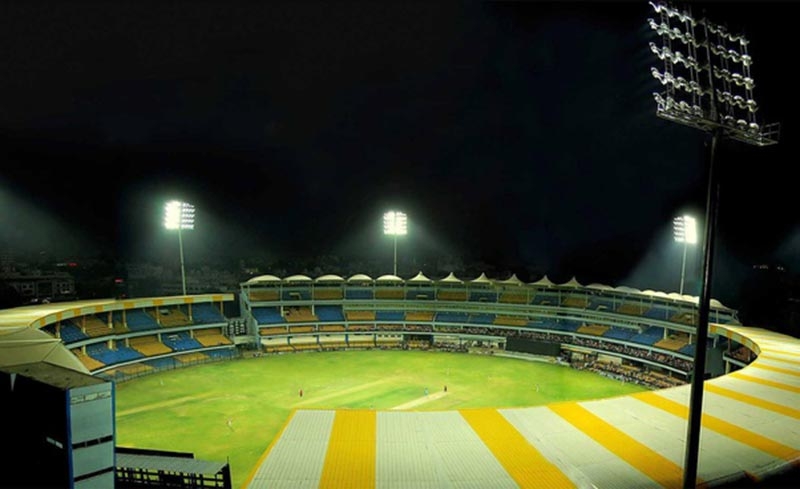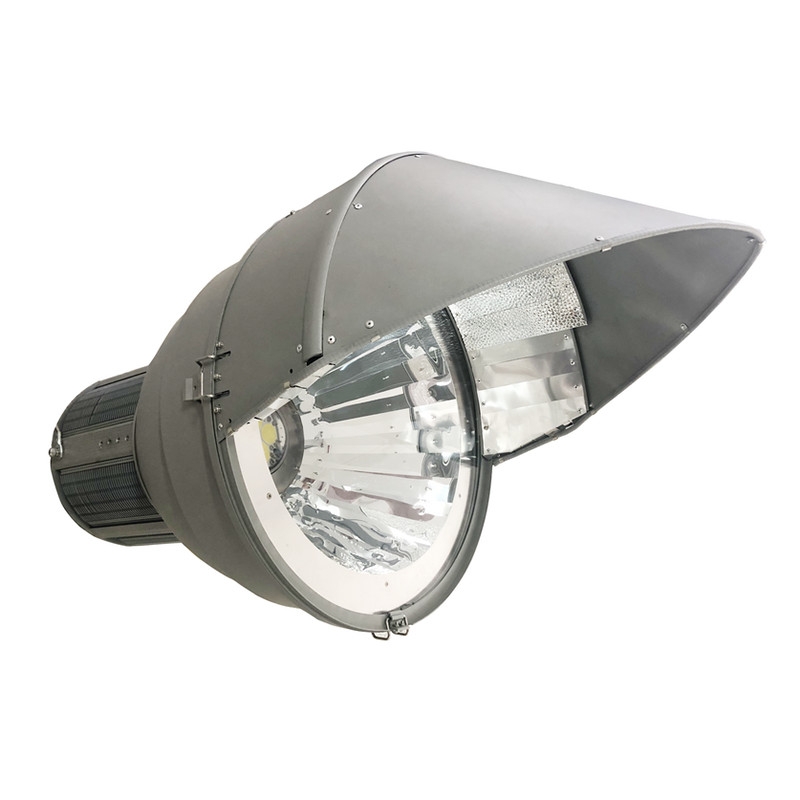Cricket, the world’s second most popular sport, traditionally took place during daylight hours, with its inaugural match dating back to June 19, 1749. However, the game transitioned to night matches in 1844 when daylight conditions became inadequate.
From its inception, cricket matches have been played under floodlights, but not all cricket grounds were equipped with them initially. Floodlights made their debut in Test cricket in March 1922 during a match between Australia and England at the Sydney Cricket Ground (SCG).
Advancements in technology and more efficient lighting systems have led to a significant increase in night matches over the years. These improved systems provide brighter illumination without compromising players’ visibility during the game.
The shift to advanced flood lighting technology has been particularly beneficial for cricket stadiums. Older lighting systems were inefficient and consumed substantial amounts of energy, resulting in high electricity costs. In contrast, modern systems are energy-efficient, reducing both consumption and expenses.
Moreover, the newer LED lights offer enhanced brightness, creating a more enjoyable environment for players, umpires, and spectators. This enhancement contributes to an overall improved experience when watching cricket matches at the stadium.
Advantages of Flood Lights in Cricket Stadiums
1. Extended Playing Hours and Versatile Scheduling
The primary advantage of employing floodlights in cricket stadiums is the extension of playing hours and enhanced scheduling flexibility. These floodlights allow matches to continue even after sunset, providing improved visibility during night games. This extended playtime ensures that cricket fans can enjoy the game well into the evening, as the floodlights illuminate the field effectively.
2. Enhanced Visibility for Players and Spectators
Floodlights play a pivotal role in enhancing visibility for both players and spectators in cricket stadiums. While commonly utilized for night matches, they also contribute to improved visibility during daylight hours. Strategically positioned at the four corners of the stadium, floodlights illuminate the entire field, enabling players to participate safely even in low-light conditions. Additionally, spectators benefit from clear visibility from any seating position within the stadium. Moreover, floodlights require minimal maintenance and repair, making them a cost-effective lighting solution compared to alternatives such as LED or HID lights.
3. Elevated Broadcast Quality
The installation of floodlights in stadiums serves the primary purpose of elevating the broadcast quality of cricket matches. This enhancement ensures that matches can be watched live or recorded for later viewing, thereby increasing viewership levels and creating additional sponsorship opportunities.
4. Energy-Efficient Lighting Solutions
Floodlights are renowned for their energy efficiency compared to other lighting options. They consume less electricity, resulting in cost savings on monthly bills and a reduced carbon footprint by decreasing the demand on coal-fired power plants.
Comparing Advanced Flood Lighting to Traditional Systems
- Challenges with traditional flood lighting
Traditional flood lighting systems are very popular, but they have several challenges. First, they can be expensive to install and maintain. Traditional systems need to be wired into the house’s electrical system, which can involve extensive rewiring of your home if you want to add more lighting or replace existing flood lights.
Traditional flood lights also use a lot of electricity, which can mean higher utility bills. And if you live in an area with frequent power outages, traditional flood lights may not work when you need them most. Advanced Flood Lighting Systems are Cheaper and Easier to Install.
- Benefits of modern LED and high-efficiency flood lights
The benefits of modern LED and high-efficiency flood lights are numerous. They offer higher light output, increased energy efficiency, and longer service life than traditional systems. Here are some of their most important features:
Light Output – LED flood lights provide more light than traditional systems. They also offer adjustable output that makes it easy to tailor your lighting needs to specific situations. This can be especially helpful for security purposes. For example, you may want to dim your outside lights during the day so they don’t attract attention from passersby on the street. However, you may need brighter lights at night when people are less likely to be around anyway.
Energy Efficiency – LED flood lights use much less electricity than traditional systems because they generate more light per watt of power consumed (lumens/Watt). In fact, many LEDs produce 50 lumens per Watt or more compared with only 20 lumens per Watt for most HID and fluorescent bulbs (although this number varies depending on the type of bulb). This means you can get twice as much light using only one-third as much electricity. Plus, most LEDs will last up to 50,000 hours (more than 12 years at 8 hours/day) before needing replacement which makes them ideal for long-term use.
Maintenance and Sustainability
- Routine Maintenance Procedures
Flood lights have a lot of maintenance requirements as compared to other lighting systems. Flood light maintenance is not only about checking the bulbs but also about cleaning and repairing them if required. Some basic maintenance practices need to be followed regularly which will help us maintain the quality of these devices.
The following two points should be kept in mind while performing flood light maintenance:
Checking of bulbs: It is very important to check the bulbs regularly to ensure that they are working properly or not. If there is any problem with any bulb, then it should immediately be replaced with a new one so that there is no interruption in playing matches due to non-working bulbs.
Cleaning of reflectors: Reflectors play an important role in flood light maintenance as they act as mirrors for reflecting light from the bulb towards the field. These reflectors should be cleaned from time to time so that no dirt particles get deposited on them due to which their performance gets affected adversely.
- Eco-Friendly Lighting Options
To make sure that your Cricket Stadiums remain sustainable over time, we recommend using LED Flood Lights instead of traditional bulbs because they last longer than traditional bulbs while using less energy and generating less heat as well as being more cost-effective overall in comparison with other types of light sources such as incandescent bulbs or halogen.
We helps: Ideal for Large Arenas
Eliminate Glare: Our design incorporates a concealed single COB light source paired with a professionally designed asymmetrical visor, ensuring players experience no visual discomfort.
Optimized Ground Illumination: With a single optic system, we concentrate light and energy precisely where it’s needed, reducing fixture requirements.
Maintenance-Free Reliability: Featuring a top-grade external LED driver and phosphor ceramic COB light source, our lamps are built to perform throughout their LED lifespan.
Perfect for illuminating vast spaces such as cricket stadiums, cricket ground floodlights, LED cricket ground lighting, and more.
CONCLUSION
Advanced floodlights have become an integral component of modern stadiums worldwide, significantly enhancing the spectator experience. These sophisticated lighting systems illuminate cricket fields during nighttime matches, extending the opportunity for fans to enjoy the sport even after work or school hours.
The introduction of advanced floodlights has contributed to the growing popularity of cricket, as more people can now watch matches without time constraints. With these cutting-edge lighting solutions in place, cricket stadiums can eliminate distractions, providing players with an optimal environment to deliver their best performance on home ground.
Post time: Sep-13-2023






